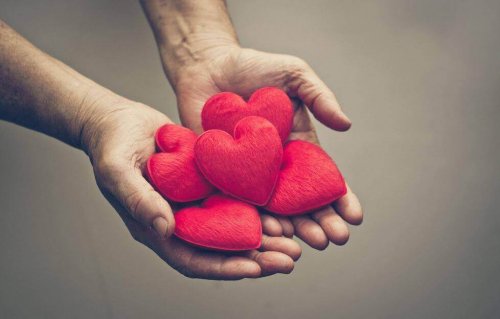The Importance of Attachment

We all have a style of relating to someone or something and that style varies depending on the level of trust you may have with those people with whom you interact. This style, form or trend is closely related to bonding. Today we’ll discuss the importance of attachment.
During our childhood, we all had a series of models of behavior that we learned from. Mainly, what others can expect from us and what we can expect from them. These lessons often have an impact on us. Further, they significantly influence our way of bonding with others.
For example, do you…
- Need the approval of others to know that you did something good?
- Want displays of affection from those you love in order for you to feel safe in a relationship?
- Feel abandoned every time your partner goes out with their friends?
- Get upset and feel threatened if your partner asks for time to be alone?
- Think that you’re insecure and jealous in your relationship?
- Have trouble opening up to new people?
- Have a hard time getting out of your routine?
The importance of attachment is behind all of these questions. Attachment identifies the way in which we relate to our loved ones. Also, the way in which we include someone within our circle of trust.
This is closely related to our tendency to give or accept what others bring to us. The same goes with our tendency to suspect or to protect ourselves in the social field. So, let’s discover the importance of attachment in our lives.
Mary Ainsworth: experiment and attachment

In 1954, Mary D. Ainsworth made one of the most remarkable and noteworthy experiments in the history of psychology. It was titled the Strange Situation Procedure. Further, her objective in the experiment was to see how babies related to the model of their main caregiver.
She analyzed the exploratory behavior of the baby in the caregiver’s presence or in the caregiver’s absence. The situation would reflect the bond that previously created the attachment model in babies.
These interactions resulted in the definition of four types of attachment:
- Secure attachment
- Anxious attachment
- Evasive attachment
- Disorganized attachment
This last one [disorganized] includes all those abnormal behaviors that are difficult to fit into the other groups.
Safe attachment
Safe attachment is connected to those children who played quietly in an unknown place, both in the presence and absence of their primary caregiver. Also, they didn’t show great anxiety when they left.
Anxious attachment
An anxious attachment was identified in children who got extremely anxious when their trusted person, who was in the same room as them, left them there. This was clear because the children interrupted their game.
Further, they stopped any explorative behaviors, were protesting, and continually were looking where their caregiver was before they left. This is a dependent attachment.
Evasive attachment
Unlike the other types of attachment, the little ones who showed evasive attachment, as per the name, paid little attention to the presence of their caregiver when he or she was in the room. Also, they didn’t show any reaction when the caregiver came back. In some way, it’s as if they were indifferent to the absence or their presence.
“Try not to confuse attachment with love. Attachment is about fear and dependency and has more to do with your love of self than your love for another. Love without attachment is the purest love because it isn’t about what others can give you because you’re empty. It’s about what you can give others because you’re already full.”
-Yasmin Mogahed-
How’s the importance of attachment reflected in adults?

Those who are fortunate enough to create good attachment relationships during their childhood, with their reference figures, tend to show these same skills in adulthood. This means they have good models in the field of social interaction.
These people don’t trust others the first time they meet them, but they gladly give trust people who earn it. This fact helps them enjoy deep and charged relationships as well as complicity.
They’re able to make plans, and you can count on them. Also, they understand there are times when the scale of priorities of others varies. That they have to devote their attention to other people or activities that have nothing to do with them. They enjoy the contact. but aren’t anxious about lacking it.
The importance of attachment is great in childhood. Further, as we’ve seen, it can also be important in adulthood as well.
However, this doesn’t mean that we’ll repeat again and again the same way of bonding to someone forever. The lack of good models or not having established relationships based on trust patterns doesn’t mean that we can’t learn them right now (and vice versa).
In this regard, we have a new opportunity to mold our attachment style with every relationship we create or maintain. A hopeful fact considering that attachment is fundamental in our way of loving and feeling loved.
So, the importance of attachment begins in childhood. However, there is an opportunity to change our way of attachment with every new relationship we establish with someone.
This text is provided for informational purposes only and does not replace consultation with a professional. If in doubt, consult your specialist.








